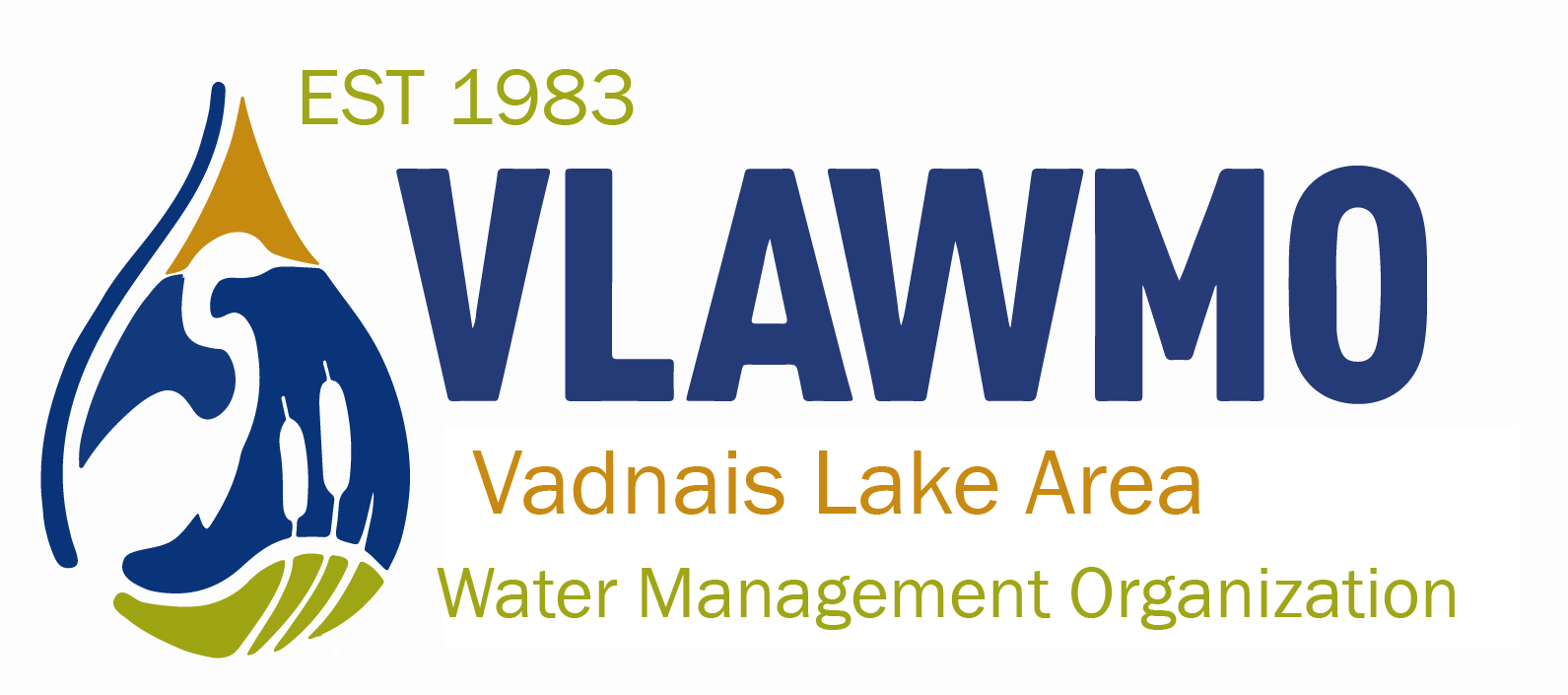West Vadnais Carp Control
Quick Facts:
West Vadnais Lake is an impaired waterbody with invasive common carp. Common carp are prevalent in many metro lakes. They are considered rough fish due to their undesirability by anglers who are interested in native game fish and their ability to tolerate poor water quality. Common carp are a water-quality problem because they feed by uprooting aquatic vegetation and stirring up lake-bottom sediments, which resuspends nutrients into the water column. VLAWMO is partnering with Ramsey Washington Metro Watershed District (RWMWD) and Carp Solutions to control common carp in West Vadnais Lake.
- Common carp can live as long as 20+ years in the wild.
- A management goal for water quality is to keep common carp density in a lake below 90 pounds per acre.
- Click here to view the West Vadnais fact sheet for lake data and more description.

Funding:
VLAWMO is contributing to this effort with capital improvement funds in partnership with the Ramsey Washington Metro Watershed District (RWMWD). VLAWMO capital improvement funds are allocated according to subwatersheds that subdivide the overall VLAWMO watershed.
VLAWMO’s financial contribution to the project in 2021: $10,500
Reason for the project:
Invasive carp stir up phosphorus-laden sediment while feeding, uprooting plants and searching for invertebrates. This activity, along with their excretion, reduces water quality.
Implementation:
The carp removal effort has included several strategies since 2020. To better understand common carp status in West Vadnais, the effort has included boat electroshocking/tagging for population estimates and box netting for harvesting. A physical barrier was in place during 2020 to prevent movement from West Vadnais into the Phalen Chain of Lakes. The Phalen Chain of Lakes is a focus of carp removal by RWMWD where carp densities have been successfully reduced and maintained to support water quality. The barrier helps to protect RWMWD’s investment in the Phalen Chain. The physical barrier was upgraded to an electric barrier in 2021 to reduce maintenance needs. Barriers are in place during the spring/summer to prevent carp movement into potential nursery areas for spawning.
Results:
Between July 30th and October 8th, 2020, 119 carp were tagged and 7 carp removals were conducted. Marked fish that are recaptured can be used to provide an estimate of the total population in a lake. A total of 21 tagged carp were recaptured during removals. Based on the ratio of recaptured carp to the total number captured, 18% of the carp population in West Vadnais was removed. The population is estimated to be around 1,950 carp, with a corresponding biomass density of 26 kg/ha. This is lower than a previous estimate also done by Carp Solutions in West Vadnais. The likely cause is a winterkill in intervening years that reduced the overall population. Other rough fish, such as bullhead, may be contributing to poor water quality.
The RWMWD will continue its carp monitoring and removal programs in nearby lakes such as Kohlman, Grass, and Phalen. Visit the RWMWD Lake Phalen chain carp management page for more info on these efforts.

Project Image Gallery
Video:
The following webinar contains more information on carp migration between lakes. Without a barrier in place, carp could move into the Phalen Chain of Lakes.








